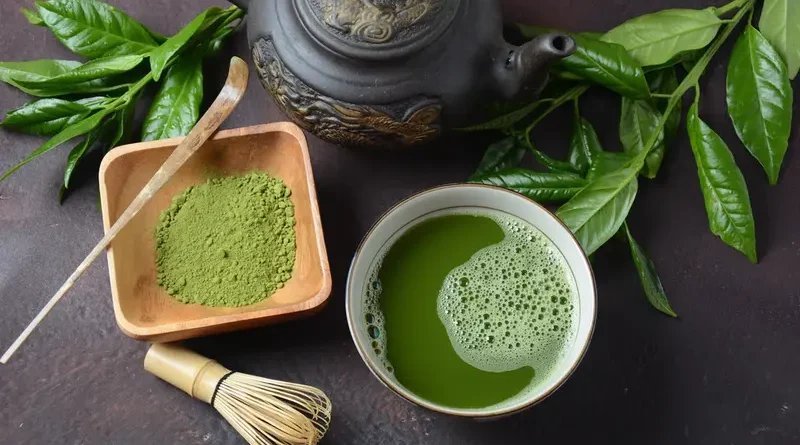Unlocking the Secrets of Japanese Green Tea
Japanese green tea is highly valued in both traditional Japanese culture and contemporary lifestyles across the globe. It is renowned for its vivid flavor and many health advantages. Japanese green tea has long captivated tea lovers and health-conscious people alike, from its roots in ancient rites to its many kinds and creative culinary applications.
This article offers a thorough examination of Japanese green tea, including its rich history, cultural significance, production methods, health advantages, and ecological practices.
Japan’s Green Tea Origins
In the eighth century, green tea arrived in Japan as a result of some daring Buddhist monks who imported tea seeds from China. As they say, the rest is history.
Importance of Green Tea in Japanese Culture
In Japan, green tea is more than simply a drink; it’s a way of life. Green tea, which represents harmony, respect, and tranquillity, is ingrained in Japanese culture and is used in both special ceremonies and daily rituals.
Types of Japanese Green Tea Varieties
Sencha:
Sencha Known as the “rockstar” of Japanese green teas, Sencha is all about vivid green tea with fresh, grassy flavors. It also feels refreshing and light like a teacup.
Matcha:
Matcha, the Green Tea Hulk, is a potent powder that has a strong flavor. It’s an experience rather than just a drink.
Gyokuro:
The fancy pants of green teas, gyokuro, is harvested shade-grown to bring out its umami deliciousness and sweetness. It resembles tea’s caviar.
Health Benefits of Japanese Green Tea
Antioxidant Properties:
Because it is bursting with antioxidants that combat those pesky free radicals, green tea is your skin’s best friend. Bid adieu to dullness and hello to radiant skin.
Advantages of Weight Management:
Do you want to lose a few pounds? Green tea can assist you. Its ability to also increase metabolism is similar to having a personal trainer in a teapot.
Traditional Japanese Tea Ceremony and Etiquette
Overview of the Tea Ceremony:
Discover the realm of customs and attentiveness with the Japanese tea ceremony, also a structured practice centered around elegance, deference, and relishing each taste.
Customs and Etiquette in Tea Preparation:
Etiquette permeates every step of making tea, from the precise motions to the silent reflection. The journey is just as important as the tea.
How Japanese Green Tea is Produced and Processed?
Here’s the lowdown on how that delicious cup of tea ended up in your mug, in case you were wondering:
Methods of Cultivation and Harvesting:
The best climates for growing it are often found in areas with good soil. To guarantee ideal growth, the Camellia sinensis tea plants are meticulously tended to and pruned. Skilled farmers hand-pick the leaves at their peak, frequently doing so throughout several harvests during the growing season.
Methods of Processing:
After being picked, the tea leaves are also carefully processed. Steaming is one of the most important processes since it keeps the leaves fresh flavor and vivid green color.
The leaves are then rolled to shape and release their aromatic oils. The unique flavor of it is only achieved through this meticulous technique.
Popular Japanese Green Tea Brands and Products
There are a plethora of delectable possibilities to discover in it. Here are a few well-known brands:
Ito En:
In the Japanese green tea industry, Ito En is a household name. They also provide a variety of high-quality goods, ranging from convenient bottled kinds to traditional loose-leaf teas.
Harney & Sons:
Despite having its headquarters in the US, Harney & Sons is well known for locating excellent Japanese green teas. They have a wide range of options, from traditional sencha to matcha blends.
Incorporating Japanese Green Tea into Modern Cuisine
Who says you should only drink green tea? Prepare to have your palate teased by these inventive culinary creations:
Green Tea Desserts:
It gives a pleasant touch to desserts, bringing the ideal combination of earthy and sweet flavors to everything from delicate matcha cakes to creamy green tea ice cream.
Green Tea Infused Savory Dishes:
Try savory recipes that are infused with green tea, such as matcha-glazed fish or green tea soba noodles, to broaden your pallet. Cooking is a creative endeavor with countless possibilities!
Conclusion
In summary, Japanese green tea reflects a tasteful, traditional, and healthful combination that appeals to people of all ages and backgrounds. The charm of it persists as a representation of cultural legacy and overall well-being, whether it is savored in a tranquil tea ceremony or combined with modern cuisine.
This adaptable beverage embraces its traditional origins as well as new uses, fostering a profound appreciation for the sustainability and craftsmanship found in every cup.
You Can Read More About Green Tea
Flavored & Unflavored Green Tea Leaves: Need to Know About it
How to Make the Perfect Cup of Ginger Green Tea?
